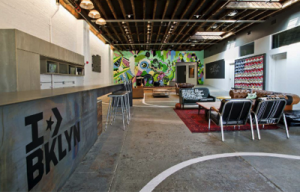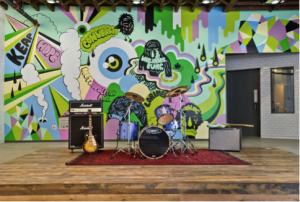The article is written by Greg Taylor, Director of Brand Provocation at Elmwood, London
Recently, the kind folks at Prophet invited me to an evening of conversation. The headline was the ever-inspiring, self-confessed opinionator Mr. Mark Earls. He provided the stimulus for some lively chat around his latest book, ‘I’ll have what she’s having…’ (more on this later). After the event, I meandered my way through the back streets of Covent Garden and was reminded of one of our own mantras at Elmwood, something we call the ‘thumb gutty principle’. Over the years, this simple phrase has ear-wormed its way into our daily conversations, becoming a shorthand for ‘that feels right’ or ‘that’s the right thing to do’. After noodling more on Mark’s nuggety provocations, the big question that arose was what drives us to behave in ways that instinctively just ‘feel right’? And what does that mean for brands?
The origins of the thumb gutty principle itself go back to a conversation our chairman, Jonathan Sands, had many moons ago with one of Asda’s founders, Peter Asquith. On his return, Jonathan recounted the story of how Mr. Asquith made his decisions as to whether a new potential building site for a store was right or not. He’d simply hold out his thumb to size up the site before pressing it on his tummy. If it felt right, he’d buy it, if not, he moved on. He believed too many decisions were made by accountants, rather than how something made you feel. We agreed. There’s always room for intuition in business life. And so we took up his saying, applying the rule of thumb, and following our instincts.
There’s nothing as queer as folk – why do we do the things we do?
So back to Mark’s book, ‘I’ll have what she’s having…’. The title comes from the 80s rom-com classic ‘When Harry met Sally’. You’ll remember the famous faked orgasm scene in the diner, when the older lady sitting at the table next to Sally’s tells the waiter ‘I’ll have what she’s having!’. Because we’re fundamentally social animals, much of what we do is because of what others do. We may post-rationalise why we do stuff (to make ourselves feel better, more grown-up or intelligent) but at the time, we quite often – as Nike would say – ‘just do it’. Take yawning, for example. Why is it that when someone yawns we all join in? Scientists at the University of Albany in New York suggest that it’s not because we’re tired! Yawning is actually something we do because it cools our brain and so helps us stay awake. When we contagiously yawn, we are in fact participating in an ancient, hard-wired ritual that evolved to help groups stay alert and detect danger.
Photo: people yawning – social behaviour
The implication being that we’re born to copy because in our pre-historic past it literally could be the difference between life and death. In the world of branding things aren’t quite so drastic – I’m not going to die if I don’t drink Coke – but if I’m caught in the studio with some naff PC instead of Apple, the subsequent ridicule might just feel like I am!
Pass it on – make copying easier
If to be human is to be a ‘groupie’ and consciously or unconsciously governed by the collective, then for branding to be truly effective, it should be a groupie thing too. So how do we help brands affect what people do instead of what they think? The answer perhaps lies in providing people with short cuts (rules of thumb) and anecdotes (simple stories). Neither of these things necessarily need to be based upon rational thinking – witness the Duke and Duchess of Cambridge taking part in a Mexican wave at Wimbledon’s centre court – they probably just need to be easy to do or easy to remember. The point is instead of thinking of branding as the product or the people, think about it as the social thing in between.
Photo: another example of ‘social behaviour’
The good news is more than ever before, we live in a share-it-all culture. People are sharing more information about what they like, how they feel, where they are and who they’re enjoying it with. Getting in touch with human nature means we can’t help but join in. For brands, that now means behaving like people and being skilled in the three Cs – conversation, collaboration and creation.
A good example of a brand that gets the three Cs and plays in the social space between people and product is Converse. The sneakers brand has, over the years, been adopted by the music industry, with generation after generation wearing its product. This means that Converse has those two vital ingredients to being a successful groupie brand – it has the iconic Chuck Taylor sneaker (now a highly recognisable short cut rule of thumb for ‘cool’) and it has anecdotal evidence in spades as to why it’s cool (lots of stories from people in music). Capitalising on this, it launched Converse Rubber Tracks, a recording studio in Williamsburg, Brooklyn. Here, undiscovered artists can access the most advanced, high-end equipment for free and lay down tracks that may or may not get them a record deal elsewhere. Since its opening last summer, 160 bands have come to record. Fostering new music talent and giving back to its core community is how Converse becomes relevant and real to the people who would buy and wear its sneakers.
Be a part of it
The interesting thing about Converse is that when you listen to the CMO Geoff Cottrill, you genuinely get the sense that they’re not using music to market the brand, that instead they’re following their thumb gutty instincts to give something back to the community or group they feel part of. The fact that they are sold in more than 130 countries, have nearly 25 million Facebook fans and 50,000 Twitter followers (and that Nike reported $1.1 billion revenues for Converse in 2011, up 15% from 2010) probably means that wily old Mr. Asquith was onto something we could all learn from.
About the Author

Greg Taylor became founding partner in global brand design consultancy Elmwood in 1989. Now Director of Brand Provocation, Greg is the creator and facilitator of Step Change™, Elmwood’s strategic tool for moving ideas forward. Clients include ASDA, Wal-Mart, Arla Foods, BBC, COI (Defra and DfT), Cable&Wireless, Comic Relief, Debbie & Andrew’s, Durex, Glasgow 2014 Commonwealth Games, McCain, and the Met Office.



